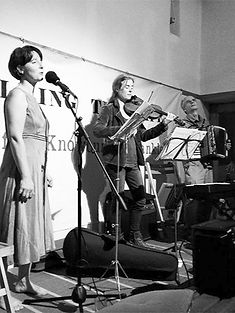top of page



Birmingham’s lack of a clean water supply and burgeoning industrial population made it imperative to secure a fresh and reliable source of drinking water. So in 1892 an Act of Parliament allowed the City of Birmingham to acquire around 71 square miles of land N.W. of Rhyader. This land had been identified as receiving extremely high rainfall and was deemed to be sparsely populated.
The Elan Valley Scheme was opened in 1904 by King Edward V11. The aqueduct is 73.5 miles long and carries 80 million gallons of water to Birmingham every day. It’s not just a ‘pipe’, but rather a balance of brick-lined tunnels, cut-&-cover brick-lined conduits (or channels), and metal pipes.
The aqueduct was designed by James Mansergh to be entirely gravity fed with a fall of 169 feet from Foel Tower to Frankley Reservoir. The average gradient in the tunnels and conduits is a drop of about one foot per mile and within the pipes is three foot per mile, achieving an overall water flow of about two miles per hour.
I first became aware of ‘The Pipe’ or, to use its proper name, the Elan Valley Aqueduct, over 20 years ago, when it was spied from the car as I drove through Nantmel. Fast forward 10 years or so & I heard the phrase ‘Walking the Pipe’
in reference to the walksmen who lived in cottages adjacent to ‘The Pipe’, with each responsible for the upkeep of a stretch of the EVA. One retired walksman told me how, during the autumn shutdown that allowed for inspection & repair, he & EVA manager Eddie Sayers walked the tunnel from Monaughty to Knighton by torchlight.
In 2017 I began to explore ‘The Pipe’ further through research & performance.
It was my aim to celebrate the genius of the scheme that carries the water gathered in Elan Valley to the reservoir at Frankley; but also to gather & share stories from the landscape, towns & villages through which it flows.
I was thrilled with the enthusiastic response & all the contributions that I received.
Financial support from Arts Council England allowed me to develop & deliver a programme of walks, talks, musical performances & community events following the route of the pipe, between Bleddfa & Frankley.


Rita MortonKate Green
00:00 / 04:41
WALKING the PIPE BOOK
With an aesthetic nod to Eustace Tickell's book 'The Vale of Nantgwilt: A Submerged Valley' published in 1894 as engineers & 1000's of navvies embarked upon the scheme to supply the Industrial Midlands with a supply of Welsh water, this 44 page book commemorates the Bleddfa to Frankley stage of the project.
Pipe Songs
Written and performed in a style that would have been popular during the building of the pipe, drawing parallels between its creation and the present day.
Performed at many venues along the way
& on BBC Radio Shropshire, accompanied by musicians Faith Brackenbury & John Neilson
The Pipe Chronicle
was published each month announcing
events & sharing stories. Posters & banners
kept people up to date as the walk passed through towns & villages along the way.




"Kate created a tapestry of words, movement and connection. There are many little tributaries of ideas – reaching out and drawing in people; encouraging us to listen and observe – the sky, earth and water and all things in between. Above all we are connected with one another however loosely. I am much heartened by this." audience feedback

bottom of page



